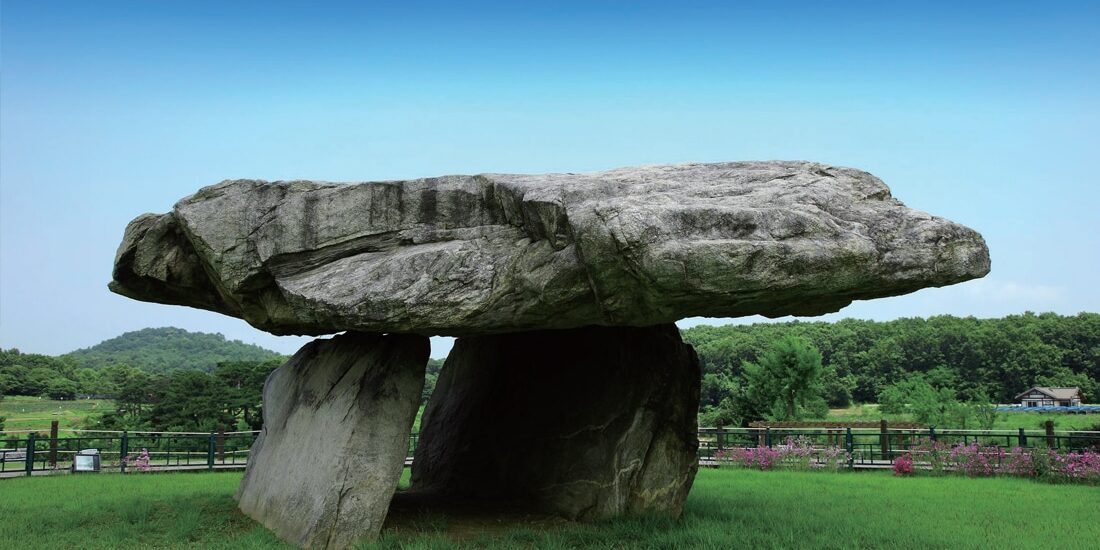At the 47th session of UNESCO’s World Heritage Committee in Paris last week, the Korean Peninsula claimed two new entries on the prestigious list of the greatest cultural and natural sites in the world. Mount Kumgang, North Korea’s mythic mountain range, and the Bangucheon petroglyphs in South Korea, an archaeological canvas of Neolithic life, add to the recognition of the significant cultural and natural riches of a divided peninsula
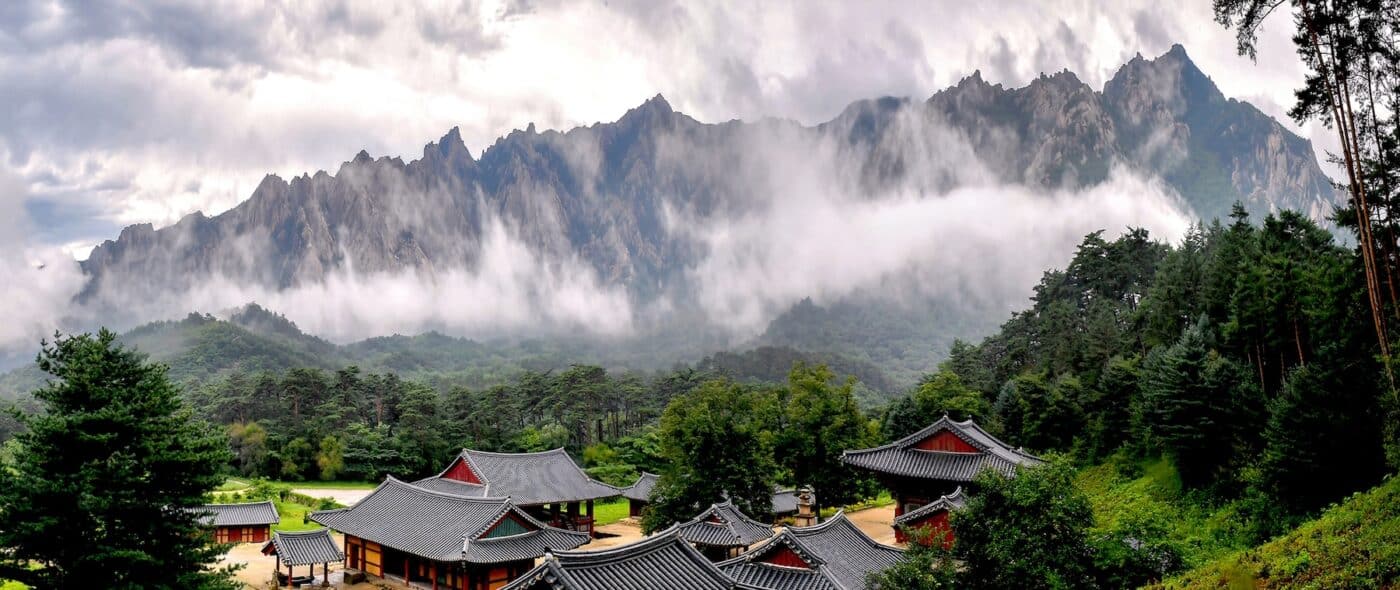
The famous jagged peaks of Mount Kumgang in North Korea. Photo: Ri Chung Song © Korea National Heritage Preservation Agency
The list, representing extraordinary feats of human endeavor or of ecological wonder, now includes 17 sites in South Korea and 3 sites in North Korea. The full list of UNESCO-recognized sites spans 1,248 properties across 170 countries. (21 new cultural sites and 4 natural environments joined the register this year.) But few additions carry the geopolitical gravity or the aesthetic poetry of the Korean duo.
“If I were to die the day after seeing Kumgang, I would have no regrets”
Mount Kumgang, or Kumgangsan, is historically one of the most famous and beloved mountains on the Korean peninsula. The 5,374 ft. high mountain range is located near the east coast of Korea, not far from the demarcation line with the South, and its 12,000 peaks are only about 31 miles from the South Korean city of Sokcho in Gangwon-do.
Also called the Diamond Mountains, Mount Kumgang is part of the Taebak mountain range and was considered sacred by Korean Buddhists for thousands of years. Composed of rugged, glittering granite peaks, cliffs, steep ravines, waterfalls, and ancient Buddhist temples, the Chinese Song Dynasty poet Su Shi (1037-1101) famously said, “If I were to die the day after seeing Kumgang, I would have no regrets.”
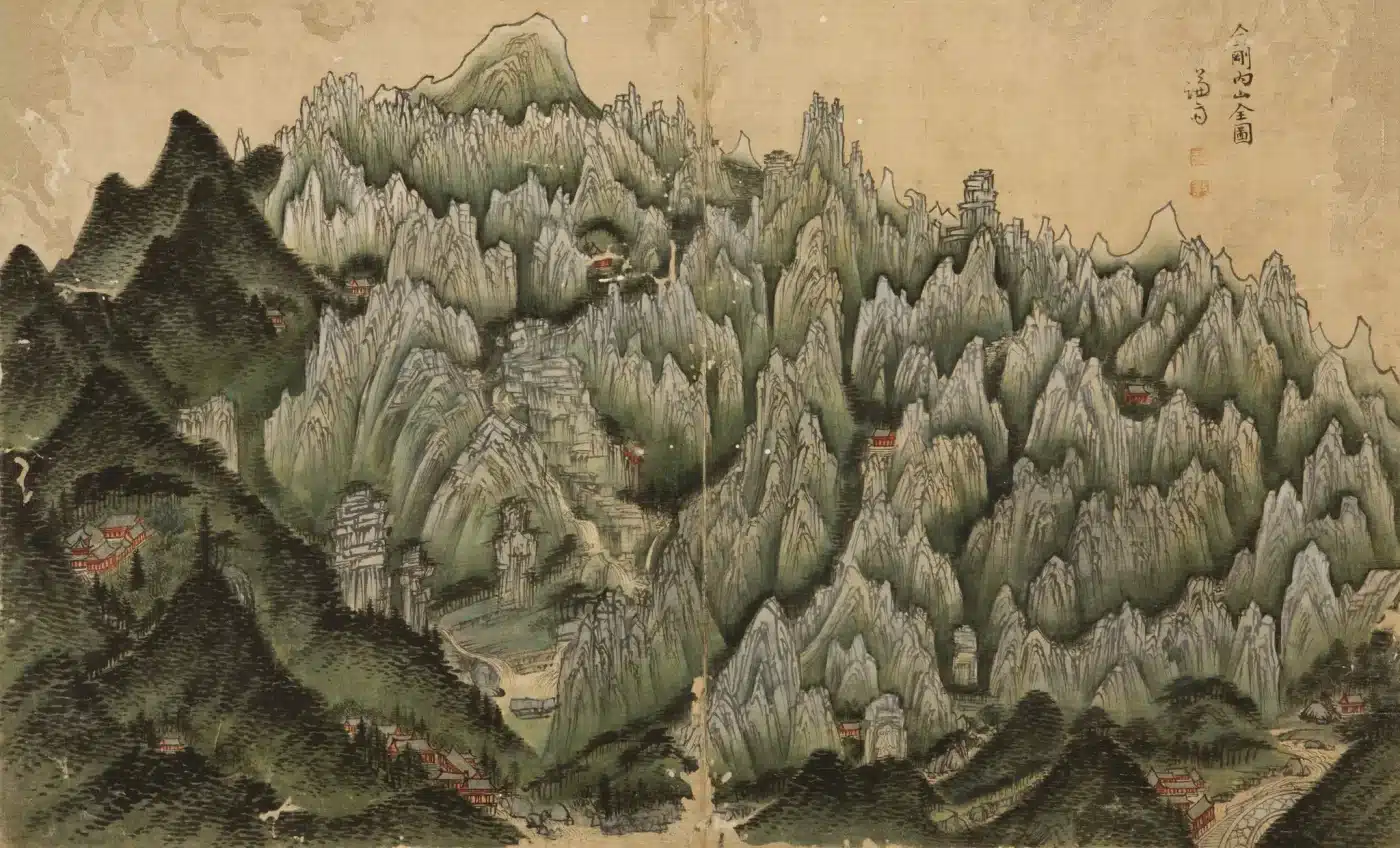
“General View of Inner Kumgang,” Jeong Seon, mid 18th century. Waegwan Abbey, South Korea.
The mountains have been depicted endlessly in brush painting, folklore, and, more recently, nationalist iconography. Koreans and foreigners alike have marveled at its beauty for ages, but due to political circumstances, only North Korean domestic visitors are currently allowed to visit the beautiful peaks.
Petroglyphs offer glimpse of Korean life 7,000 years ago
To the south, in the industrial port city of Ulsan, the petroglyphs along the Bangucheon Stream offer a different kind of revelation. Over 300 rock carvings depicting whales, tigers, sea animals and human figures, etch a record of early Korean life into the bedrock. It is considered to be one of the oldest works of art to show whaling by prehistoric man.
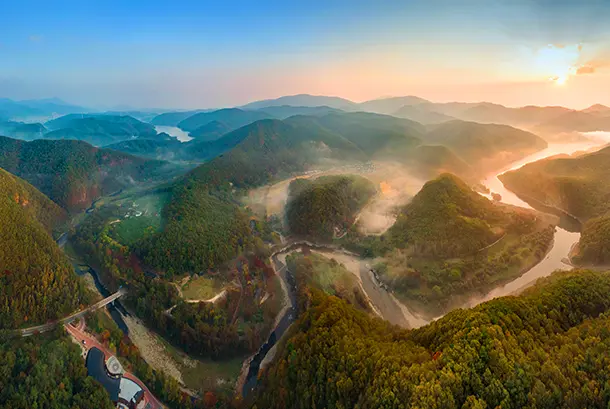
Bangucheon Stream, Ulsan, South Korea. Photo Ulsan Metropolitan City
Discovered in 1971, the Bangudae Petroglyphs are pre-historic engravings on flat vertical rock faces. They are on rocks around 26 ft wide and 16 ft high on steep cliffs on the riverside of the Daegokcheon stream, a branch of the Taehwa River, which runs eastward and joins the East Sea at Ulsan. The surrounding ten rock faces have a small number of engravings as well.
Many sea and land animals are depicted as being pregnant or with young, indicating the ancient people’s desire for food and fertility, according to UNESCO. Many of the humans display phalluses and are depicted with bows and spears as weapons.
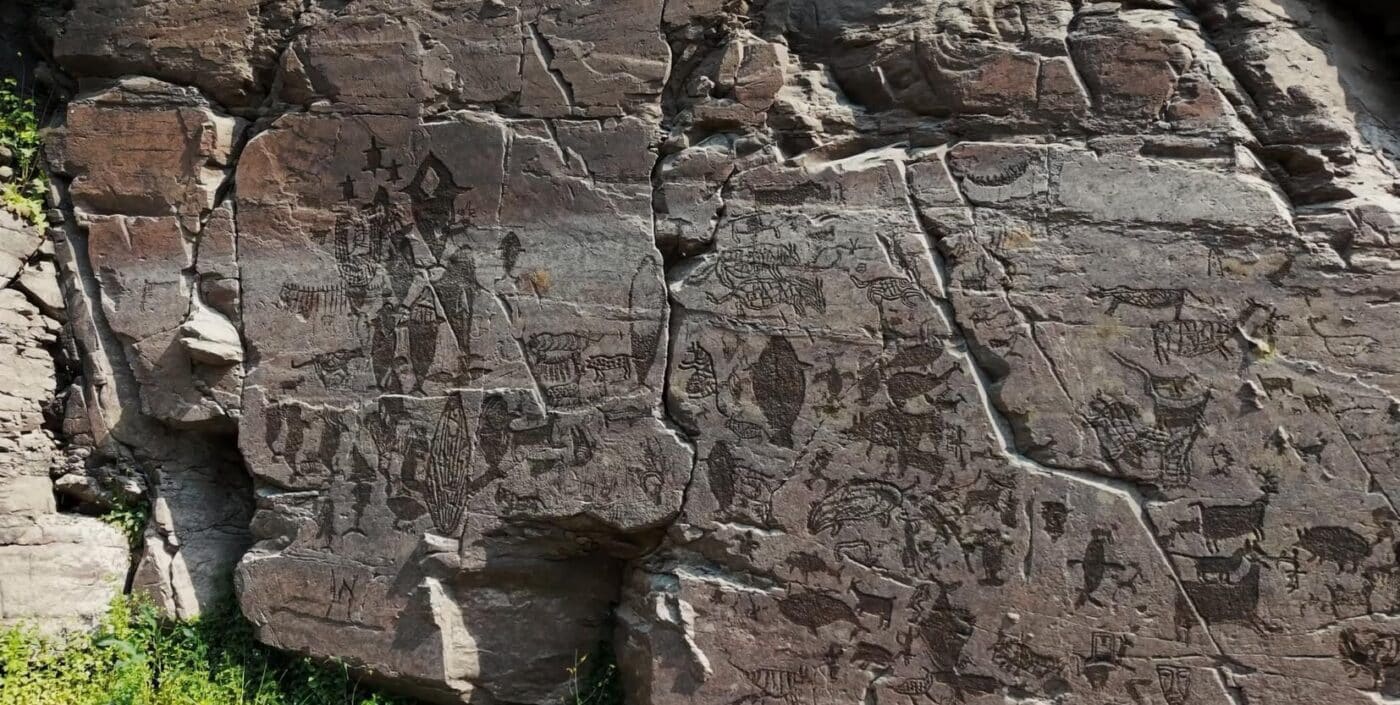
Petroglyphs of Bangudae Terrace (Korean National Treasure No. 285), Ulsan, South Korea.
If you want to see the remarkable petroglyphs of Bangudae, you’ll first need to cross the shallow waters of the Daegokcheon Stream and climb a 100-foot cliff. To make things easier, however, Korean authorities have built a nearby museum featuring a detailed replica of the rock carvings. This allows visitors to examine the engravings up close.
To view the original site, you can take a winding path through a quiet river valley. At the top of a small hill, you’ll find sweeping views that feel worlds away from Korea’s busy roads and cities. From there, high-powered binoculars will give you a view of the actual rock face across the stream.
Here is a complete list of the UNESCO World Heritage Sites on the Korean peninsula.
UNESCO World Heritage Sites in North Korea (Year Listed)
1. Mt. Kumgang (2025)
A combined cultural and natural site, featuring serene valleys, cascading waterfalls, ancient temple ruins, and Buddhist carvings set within a landscape of over 12,000 granite peaks
2. Historic Monuments and Sites in Kaesong (2013)
A collection of 12 landmarks—palaces, schools, observatories, tombs, and fortifications—from the Koryo Dynasty (10th–14th centuries), reflecting a pivotal era of political and cultural exchange heritage.
3. Complex of Koguryo (Goguryeo) Tombs (2004)
Located near Pyongyang and Namp’o, this site includes 30 mural-adorned tombs from the Goguryeo kingdom (37 BCE–668 CE). The vibrant murals depict myth, ritual, and daily life, offering invaluable insight into early Korean culture
UNESCO World Heritage Sites in South Korea (Year Listed)
Cultural Sites:
1. Bangucheon Petroglyphs (2025)
(Ulsan) Newly inscribed, these Neolithic rock carvings are among Korea’s oldest representations of human-animal interaction. Museum open to public.
2. Gaya Tumuli (2023)
(Gyeongsang Provinces) Gimhae, Haman, Changnyeong – Visit burial mounds and the Daeseong‑dong Tombs Museum.
3. Seowon, Korean Neo-Confucian Academies (2019)
(Across North and South Gyeongsang and Chungcheong provinces) Nine academies dating from the Joseon period, serving as regional centers for Confucian education and philosophy.
4. Sansa, Buddhist Mountain Monasteries in Korea (2018)
(Various provinces) Seven active monasteries that exemplify Korea’s distinctive form of mountain Buddhism.
5. Baekje Historic Areas (2015)
(Chungcheongnam-do and Jeollabuk-do) Sites from the Baekje Kingdom including temples, fortresses, and tombs, showcasing the kingdom’s artistic and architectural reach.
6. Namhansanseong (2014)
(Gyeonggi-do) A fortress-city built in the 17th century that offered refuge during invasions and remains a symbol of Korean resilience.
7. Historic Villages of Korea: Hahoe and Yangdong (2010)
(Gyeongsangbuk-do) Preserved Confucian clan villages with traditional homes, rituals, and architecture.
8. Royal Tombs of the Joseon Dynasty (2009)
(Gyeonggi-do and Gangwon-do) Forty tombs across 18 locations, reflecting Confucian aesthetics and burial practices.
9. Gyeongju Historic Areas (2000)
(Gyeongju, Gyeongsangbuk-do) The ancient capital of the Silla Kingdom, containing tombs, palaces, and Buddhist relics spread across a picturesque cityscape.
10. Gochang, Hwasun and Ganghwa Dolmen Sites (2000)
(Incheon, North & South Jeolla) Korea is home to the largest number of dolmens (megalithic funerary monuments of the Neolithic and Bronze Age) in the world. Gochang features a well-curated museum and walking trails.
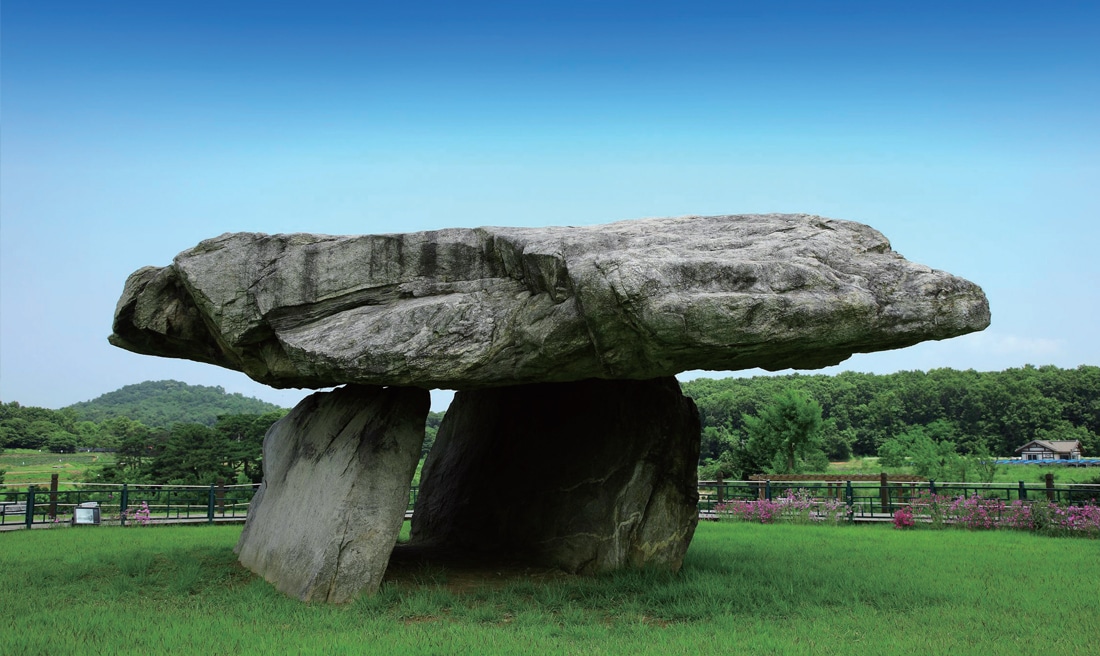
Dolmen in Ganghwa, South Korea.
11. Hwaseong Fortress (1997)
(Suwon, Gyeonggi-do) An 18th-century military structure built under King Jeongjo, remarkable for its blend of Eastern and Western engineering techniques.
12. Changdeokgung Palace Complex (1997)
(Seoul) An exemplar of Joseon Dynasty palace design, harmoniously integrated with the natural topography.
13. Jongmyo Shrine (1995)
(Seoul) The Confucian shrine where rituals for deceased Joseon kings are performed in spring and autumn. Its austere architecture mirrors the solemnity of its rites.
14. Haeinsa Temple and Janggyeong Panjeon (1995)
(Hapcheon, Gyeongsangnam-do) Home to the Tripitaka Koreana, the world’s most complete collection of Buddhist scriptures carved onto wooden blocks in the 13th century.
15. Seokguram Grotto and Bulguksa Temple (Gyeongju, Gyeongsangbuk-do) (1995)
A masterpiece of Buddhist art and architecture from the 8th century, blending spiritual solemnity with architectural elegance.
Natural Sites
16. Getbol, Korean Tidal Flats (2021)
(South Jeolla, North Jeolla, South Chungcheong) An ecological and cultural treasure, these wetlands are crucial habitats for migratory birds and showcase the interplay of people and nature.
17. Jeju Volcanic Island and Lava Tubes (2007)
(Jeju-do) A dramatic landscape formed by volcanic activity, including Mount Hallasan, lava tubes, and volcanic cones.

The world’s largest lava column in Manjanggul Cave, Jeju Island, South Korea. Photo by Lamoix.

